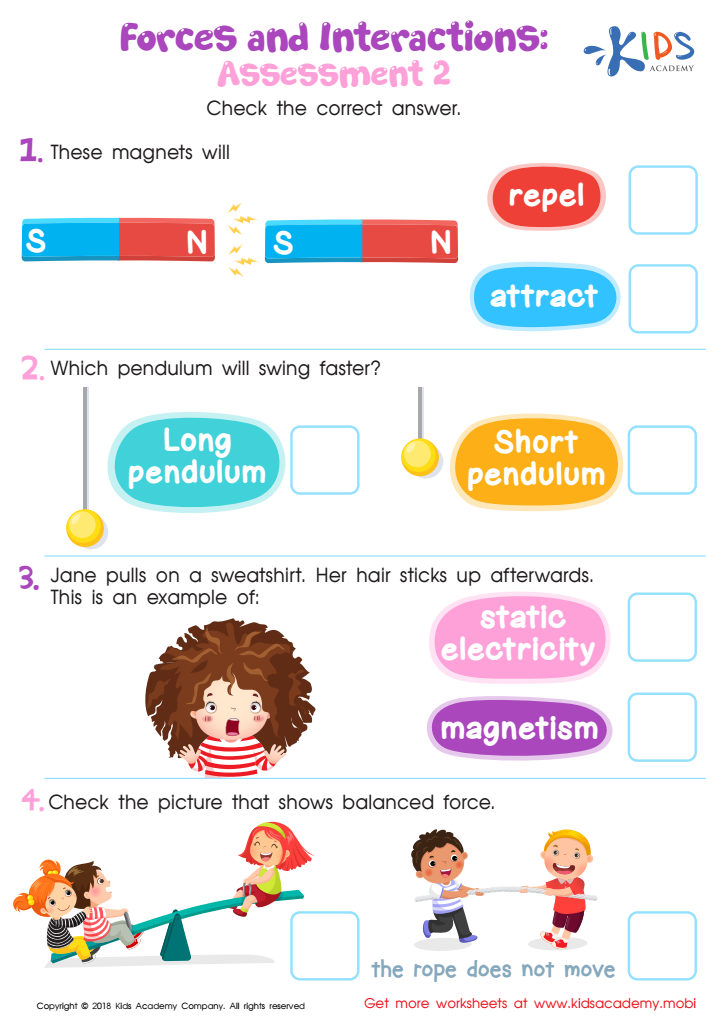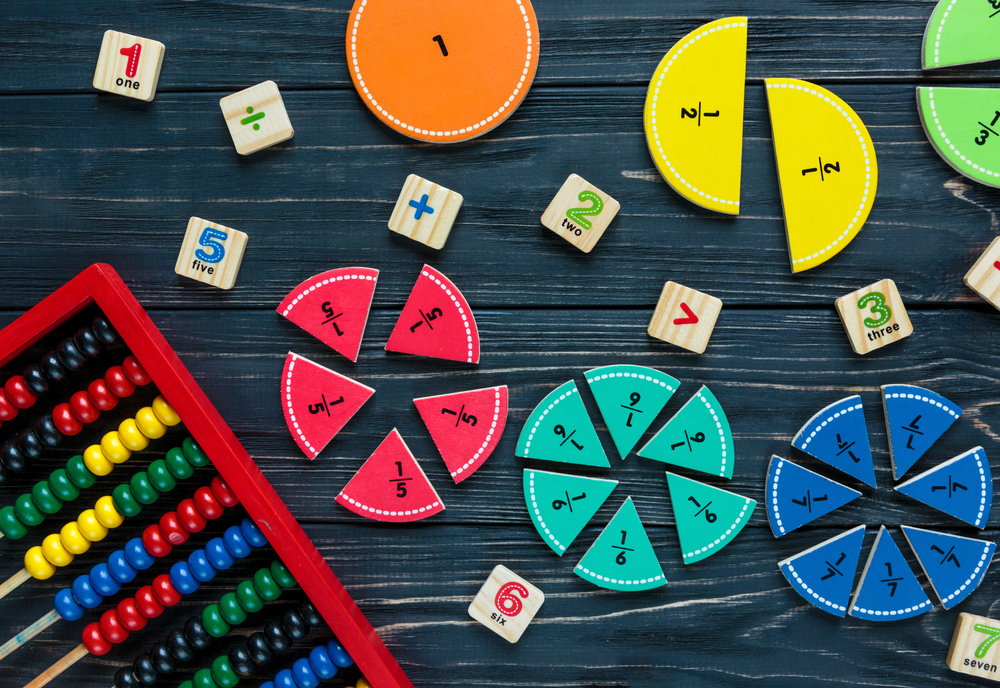Basic physics comprehension Worksheets for Kids
2 filtered results
-
From - To


Forces and Interactions Worksheet For 3rd Grade
Question/Answer
How does the mastery of the Basic physics comprehension skill affect a student's performance at an early age?
Mastery of basic physics comprehension at an early age significantly enhances a student's analytical thinking, problem-solving skills, and curiosity about the natural world. This foundational understanding establishes a strong base for advanced scientific study, improves academic performance across STEM subjects, and encourages a lifelong interest in learning and exploration, setting a solid groundwork for future educational and career opportunities.
What are some effective activities to train students’ Basic physics comprehension skill when teaching them about Physical Science?
Effective activities for training students' basic physics comprehension include interactive experiments, hands-on projects to demonstrate principles, problem-solving sessions, physics simulations, conceptual quizzes, group discussions on real-life physics applications, and the use of visual aids like diagrams and videos. These methods engage students actively, making complex concepts more understandable and enhancing their overall grasp of physical science.
How to train the Basic physics comprehension skill in Grade 3 students learning about Physical Science?
To train Basic Physics comprehension in Grade 3, focus on interactive and hands-on activities that relate to their everyday experiences. Use simple experiments, demonstrations, and visual aids to explain fundamental concepts like gravity, force, energy, and motion. Encourage curiosity by asking predictive questions before experiments and discuss the outcomes. Integrating storytelling with physics concepts can also enhance understanding and retention.

 Assign to My Students
Assign to My Students




















